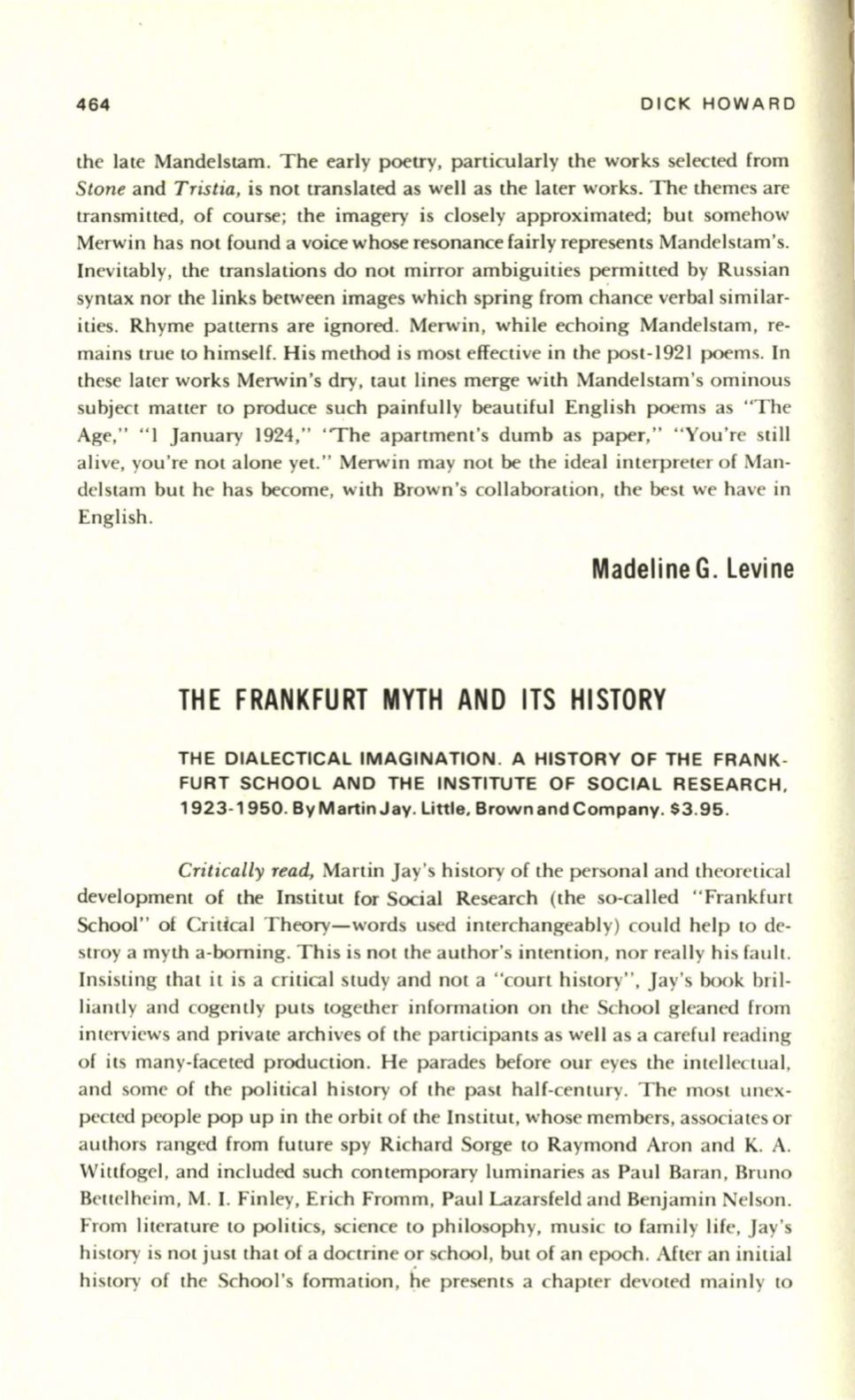
4 64
DICK HOWARD
the late Mandelstam. The early poetry, particularly the works selected from
Stone
and
Tristia,
is not translated as well as the later works. The themes are
transmilled, of course; the imagery is closely approximated; but somehow
Merwin has not found a voice whose resonance fairly represents Mandelstam's.
Inevitably, the translations do not mirror ambiguities permitted by Russian
syntax nor the links between images which spring from chance verbal similar–
ities. Rhyme patterns are ignored. Merwin, while echoing Mandelstam, re–
mains true to himself. His method is most effective in the post-1921 poems. In
these later works Merwin's dry, taut lines merge with Mande lstam's ominous
subject maller to produce such painfully beautiful English poems as "The
Age," "I January 1924," 'The apartment's dumb as paper," "You 're still
alive, you're not alone yet." Merwin may not be the ideal interpreter of Man–
delstam but he has become, with Brown's collaboration, the best we have in
English.
Madeline G. levine
THE FRANKFURT MYTH AND ITS HISTORY
THE DIALECTICAL IMAGINATION . A HISTORY OF THE FRANK–
FURT SCHOOL AND THE INSTITUTE OF SOCIAL RESEARCH,
1923-1950. ByMartinJay. Little, Brownand Company. $3.95 .
Critically read,
Martin Jay's history of the persona l and theoretical
development of the Institut for Social Research (the so-called "Frankfurt
School" of Critical Theory-words used interchangeably) could help to de–
stroya myth a-borning. This is not the author's intention, nor really his fault.
Insisting that it is a critical study and not a "coun history", Jay's book bril–
liantly and cogently puts together information on the School gleaned from
interviews and private archives of the participants as well as a careful reading
of its many-faceted production. He parades before our eyes the intellectual,
and some of the political history of the past half-century. The most unex–
pected people pop up in the orbi t of the Institut, whose members, associates or
authors ranged from future spy Richard Sorge to Raymond Aron and K. A.
Wiufogel, and included such contemporary luminaries as Paul Baran, Bruno
Beuclheim, M.
I.
Finley, Erich Fromm, Paul Lazarsfeld and Benjamin Nelson.
From literature to po li tics, science to philosophy, music to family life, Jay 's
history is not just that of a doctrine or school, but of an epoch. After an initial
history of the School's formation, he presents a chapter devoted mainly to


